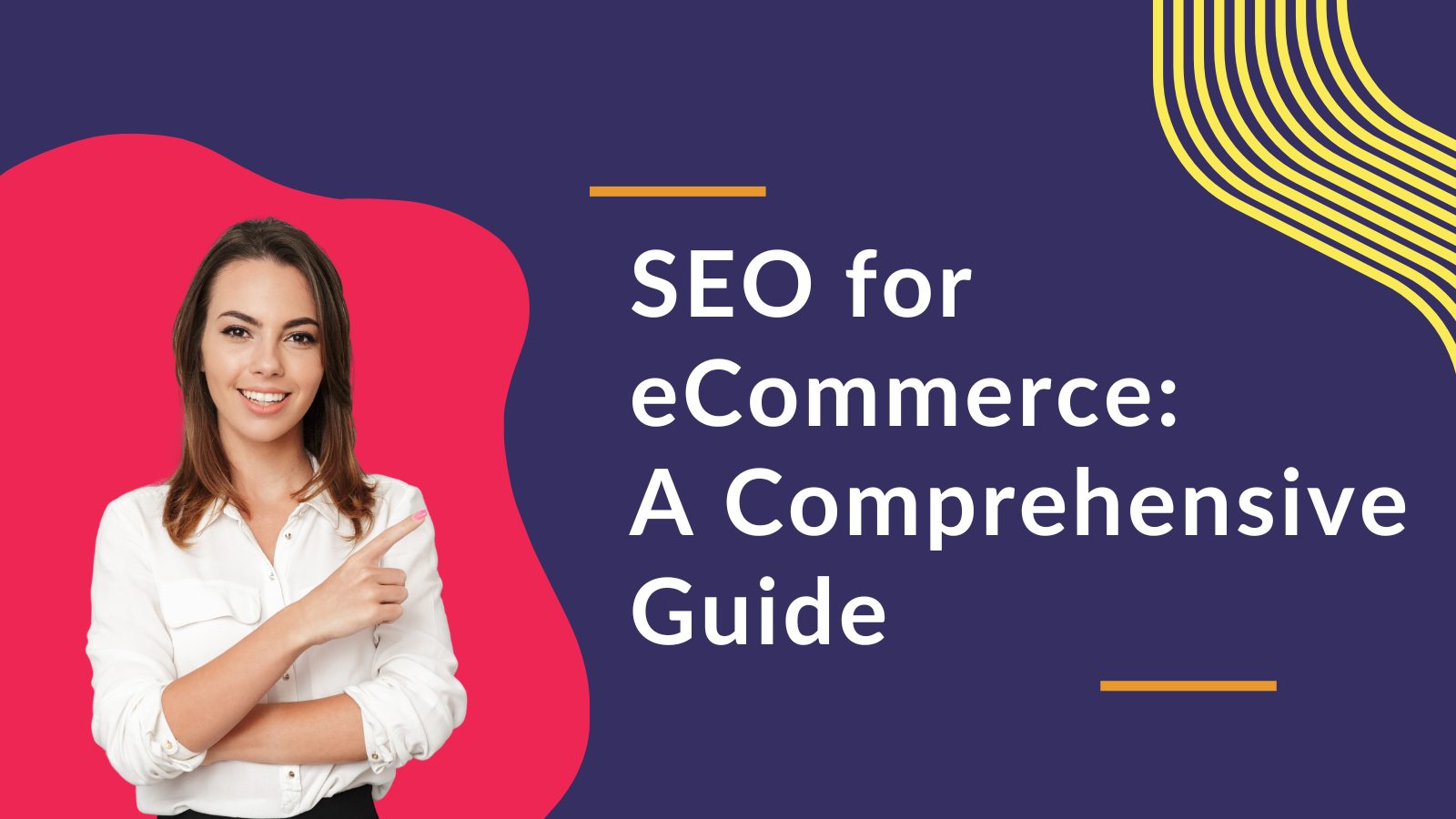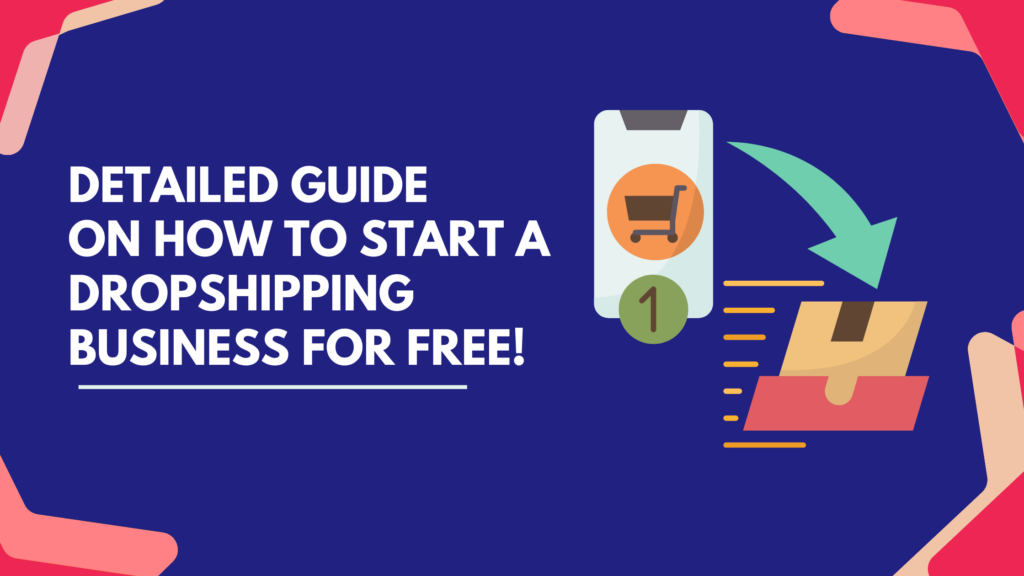In the bustling world of online commerce, where competition is fierce and attention spans fleeting, the success of an ecommerce venture hinges on its visibility in the vast digital landscape. With millions of websites vying for attention, how does one ensure their online store stands out amidst the noise? The secret to the solution is to become an expert in Search Engine Optimisation (SEO).
Welcome to our comprehensive guide on SEO for ecommerce, where we delve into the intricacies of optimizing your online store to not only attract more visitors but also convert them into loyal customers. Whether you’re a seasoned ecommerce veteran or just setting foot into the digital marketplace, understanding and implementing effective SEO strategies can make all the difference in driving organic traffic and boosting sales.
In this blog series, we’ll unravel the mysteries of SEO tailored specifically for ecommerce websites. From optimizing product pages and category structures to leveraging the latest SEO trends and techniques, we’ll equip you with the knowledge and tools necessary to boost your ecommerce venture to new heights.
But first, let’s address the fundamental question:
What is SEO actually, and why is SEO for eCommerce important?
SEO isn’t just a buzzword; it’s the lifeline of online businesses, especially for ecommerce ventures. In a nutshell, SEO involves optimizing your website to rank higher in search engine results pages (SERPs) organically, meaning without paid advertising. For ecommerce websites, mastering SEO is crucial for driving traffic, increasing conversions, and ultimately, boosting revenue.
A well-optimized eCommerce website not only ranks higher in search results but also establishes trust, credibility, and authority in the eyes of both search engines and users.
In the rapidly evolving landscape of eCommerce, staying ahead of the SEO curve is essential for maintaining a competitive edge. With search engine algorithms constantly evolving and consumer behavior undergoing paradigm shifts, ecommerce businesses must adapt their SEO strategies accordingly to stay visible and relevant.
In the subsequent parts of this blog series, we’ll explore various facets of SEO for ecommerce in detail, including keyword research, on-page optimization, technical SEO, link building, and much more. Whether you’re looking to fine-tune your existing SEO strategy or embark on a journey to optimize your ecommerce website from scratch, this guide will serve as your roadmap to success.
Let’s delve into each facet of SEO for e-commerce in detail:
eCommerce businesses may achieve greater brand awareness, consumer engagement, and eventually profitable growth by utilizing SEO strategies that bring them to the top of search engine results pages (SERPs). Below are a few advantages of SEO for eCommerce:
Increased Organic Traffic and Visibility:
Enhanced Visibility and Organic Traffic: SEO serves as a guiding light, directing potential customers to eCommerce platforms through strategic optimization of website content, meta tags, and keywords. Securing a prime spot on search engine results pages (SERPs) significantly boost the likelihood of clicks and conversions. Increased visibility results in a surge of organic traffic, reducing reliance on paid advertising and fostering sustainable growth.
Targeted Marketing and Personalization:
Insight into user search behaviors empowers eCommerce businesses to customize content and offerings according to customer intent. Personalized marketing initiatives enrich user experience, amplifying engagement and conversion rates. Addressing specific customer needs cultivates enduring relationships, nurturing a loyal customer base.
Cost-Effectiveness and Long-Term ROI:
Unlike paid advertising, SEO yields enduring benefits sans recurring expenses. Once favorable search engine rankings are achieved, eCommerce platforms continuously draw organic traffic, maximizing ROI. Consistent optimization endeavors and strategic content development underpin sustainable growth and profitability.
Brand Building and Credibility:
A robust online presence fosters trust and confidence in potential customers, positioning eCommerce businesses as authorities in their respective domains. Positive user experiences, coupled with top-tier content and seamless navigation, nurture brand loyalty and advocacy. Establishing brand credibility through SEO confers a competitive edge and bolsters market positioning.
Adaptability and Competitiveness:
SEO strategies evolve in tandem with shifting search engine algorithms and consumer trends, ensuring adaptability and competitiveness. Continuous optimization endeavors enable eCommerce enterprises to maintain relevance and stay ahead of the curve in the dynamic digital landscape. By harnessing cutting-edge SEO techniques and tools, eCommerce ventures can optimize online visibility and outshine competitors.
Beyond understanding SEO’s benefits, understanding its fundamentals is crucial. On-page optimisation increases visibility, while keyword research drives content production. Technical factors guarantee a pleasant user experience and indexing, while off-page initiatives like backlinks improve authority. Metric monitoring allows for continuous improvement for long-term growth. Gaining control over these components ensures a strong internet presence and more visitors.
Let’s explore these SEO components in-depth:
Key elements of SEO for e-commerce:
Keyword Research:
Keyword research is vital for e-commerce SEO, setting the stage for website visibility and organic traffic. Knowing your customers’ search language is key to aligning content with their intent. Begin by brainstorming relevant terms and phrases directly related to your products or services, considering features, benefits, and synonyms.
Two primary categories of keywords are short tail and long tail.
Short tail keywords are concise and typically consist of one to three words. These keywords are broad and general, often capturing a wide range of search intents. Examples include “shoes,” “electronics,” or “jewelry.” While short tail keywords may attract a large volume of traffic, they also tend to be highly competitive, making it challenging to achieve top rankings.


On the other hand, long tail keywords are more specific and detailed phrases, typically containing three or more words. These keywords target niche audiences and have lower search volumes but higher conversion rates due to their specificity. Examples include “women’s running shoes for flat feet” or “blue wireless headphones with noise cancellation.” Long tail keywords frequently produce more qualified leads and have greater conversion rates even though they may draw less traffic than short tail keywords.
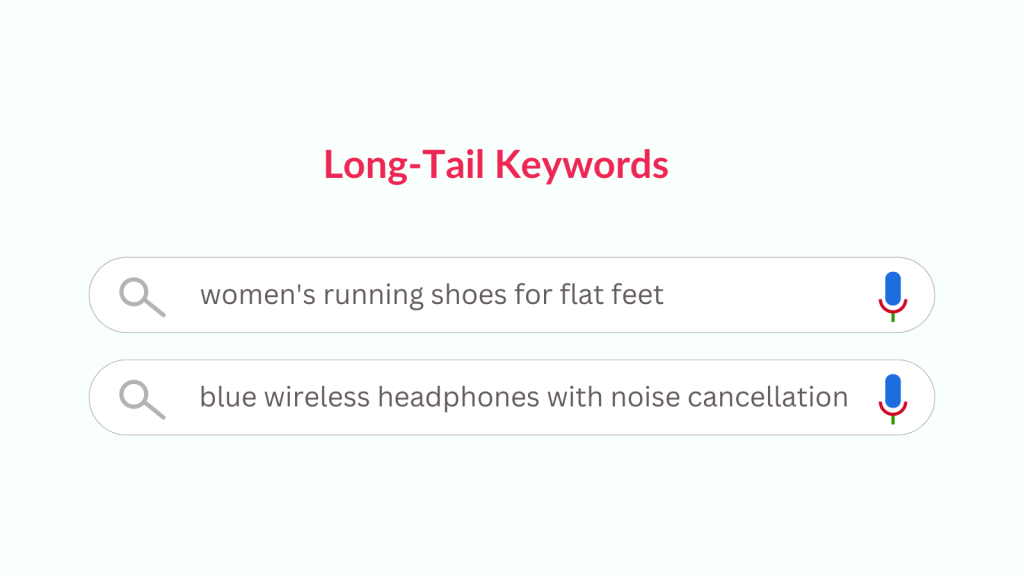

Utilize tools like Google Keyword Planner, SEMrush, or Ubersuggest to expand your keyword list and gain insights into search volume and competition. SSort keywords accordaccording ng too how ww welll theythey can can drivee focusfocused traffic.
Maintain a natural tone in your content, avoiding keyword overload to enhance user experience and rankings. Continuous keyword research ensures visibility, relevant traffic, and conversions, necessitating ongoing monitoring and adjustment in the competitive e-commerce SEO landscape.
On-Page Optimization:
On-page optimization involves optimizing individual pages of your e-commerce website to improve their visibility and relevance to search engines. This includes optimizing product pages, category pages, and blog posts with targeted keywords, compelling meta titles and descriptions, descriptive alt tags for images, and user-friendly URLs.
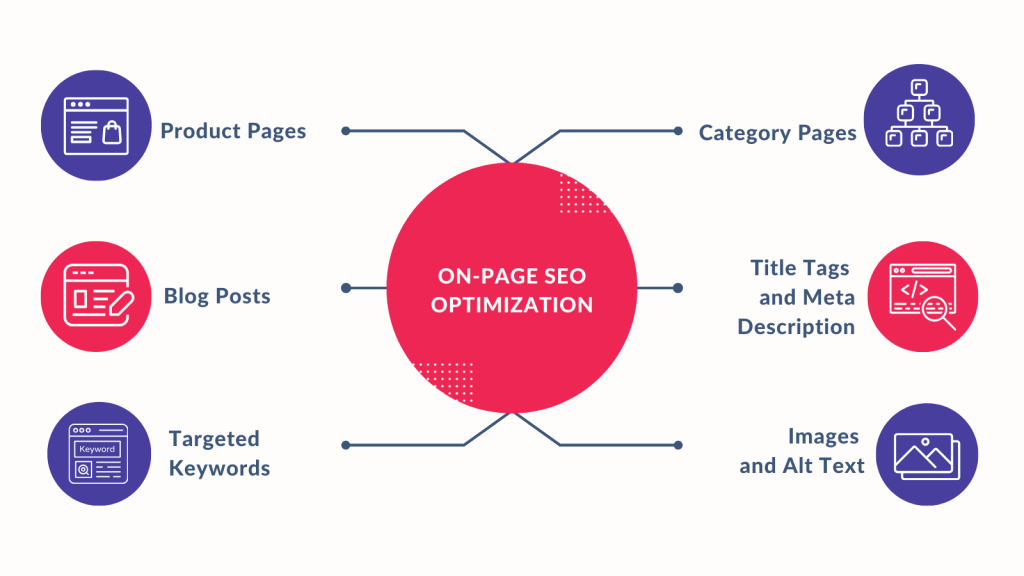

Ensure that your website loads quickly, is mobile-responsive, and provides a seamless user experience to enhance both search engine rankings and user satisfaction. Implement schema markup to provide search engines with additional context about your products and improve rich snippet displays in search results.
Off-Page SEO:
Off-page SEO refers to optimization efforts that occur outside of your website but still impact your site’s search engine rankings. Building reputable backlinks from websites that are relevant and authoritative is one of the main off-page SEO strategies. However, off-page SEO also encompasses other strategies such as social media marketing, online reputation management, and influencer collaborations.


Engage with your audience on social media platforms to increase brand visibility and generate buzz around your products. Encourage satisfied customers to leave positive reviews and testimonials, which can enhance your online reputation and credibility.
Collaborate with influencers in your industry to reach new audiences and earn valuable backlinks through sponsored content or partnerships. Off-page SEO activities help to build brand awareness, establish trust, and increase your website’s authority in the eyes of search engines, ultimately contributing to higher rankings and more organic traffic.
Technical SEO:
Technical SEO is the backbone of your e-commerce website’s search engine optimization strategy, ensuring that search engines can effectively crawl, index, and understand your site’s content. By optimizing website structure and navigation, resolving crawl errors, and enhancing site speed and performance, you create a seamless user experience that search engines prioritize.
Implementing HTTPS encryption not only secures user data but also boosts your site’s credibility in search engine rankings. Creating and submitting XML sitemaps helps search engines discover and prioritize your site’s pages, while canonical tags prevent duplicate content issues that could negatively impact your SEO efforts.
It’s crucial to conduct routine audits with tools like Google Search Console and Screaming Frog to find and fix any technical problems that could be impeding the SEO performance of your website. This will help to keep your site competitive in the always changing digital market.
Link Building:
Link building is essential for e-commerce SEO, as it establishes authority and credibility with search engines. Acquiring high-quality backlinks from industry-relevant websites through guest blogging, influencer outreach, and digital PR campaigns enhances visibility and trustworthiness. Additionally, internal linking connects related pages within your site, improving navigation and distributing link equity effectively.
For instance, consider “Trendy Tee Co.,” an online store specializing in unique t-shirts. To expand their reach, they collaborate with influential fashion bloggers, for example, Sarah. By providing free samples, Sarah features Trendy Tee Co. in a blog post, praising their quality and design.
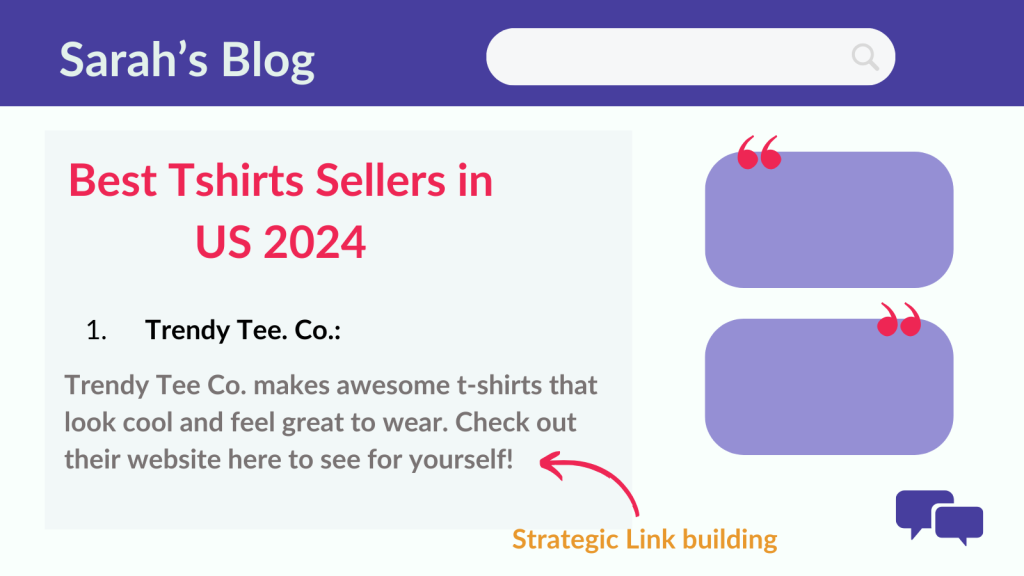

Including links to the store’s website, Sarah’s endorsement directs readers to explore and potentially purchase t-shirts. This strategy leverages Sarah’s credibility to drive targeted traffic and enhance brand recognition, showcasing the impact of strategic link building for eCommerce businesses.
However, quality should always supersede quantity in link building. Avoid spammy tactics that can harm your site’s reputation and lead to penalties from search engines. Rather, put your attention on developing genuine connections and producing informative material in order to obtain backlinks from reputable websites.
By prioritizing quality and authenticity in your link building efforts, you can boost your website’s SEO performance and long-term success in the competitive e-commerce landscape.
Get a free listing on WyseMe, a high DA website, along with a premium backlink for your e-commerce store. WyseMe: Free Backlinks on High Domain Authority Websites
“DA” in the context of websites typically stands for “Domain Authority.” Domain Authority is a metric developed by Moz that predicts how well a website will rank on search engine result pages (SERPs). It is calculated based on various factors, including the number of linking root domains, the quality of those links, and other website metrics. A higher Domain Authority score indicates a higher likelihood of ranking well in search engine results.”
Improve Your Ecommerce: Optimizing Product Pages and Category Structures
Optimizing product pages and category structures is a pivotal strategy in the success of any ecommerce venture. These elements serve as the foundation of your online store, guiding visitors through your inventory and ultimately driving conversions.
Let’s explore the essential elements of enhancing your e-commerce endeavor through product page and category structure optimization.
Crafting Compelling Product Pages:
High-Quality Content:
- Uniqueness: Ensuring each product description is unique, avoiding duplicate content issues that can harm SEO rankings.
- Descriptiveness: Providing detailed information about the product’s features, specifications, and benefits to help customers make informed purchasing decisions.
- Engagement: Using persuasive language and storytelling techniques to captivate the audience and create an emotional connection with the product.
- User-Generated Content: Incorporating user reviews, ratings, and testimonials to build trust and credibility, as well as to provide social proof of the product’s quality and popularity.
On-Page Elements Optimization:
- Title Tags: Crafting descriptive and keyword-rich title tags that accurately represent the content of the page and entice users to click through search engine results pages.
- Meta Descriptions: Write compelling meta descriptions that summarize the content of the page and encourage users to visit the website.
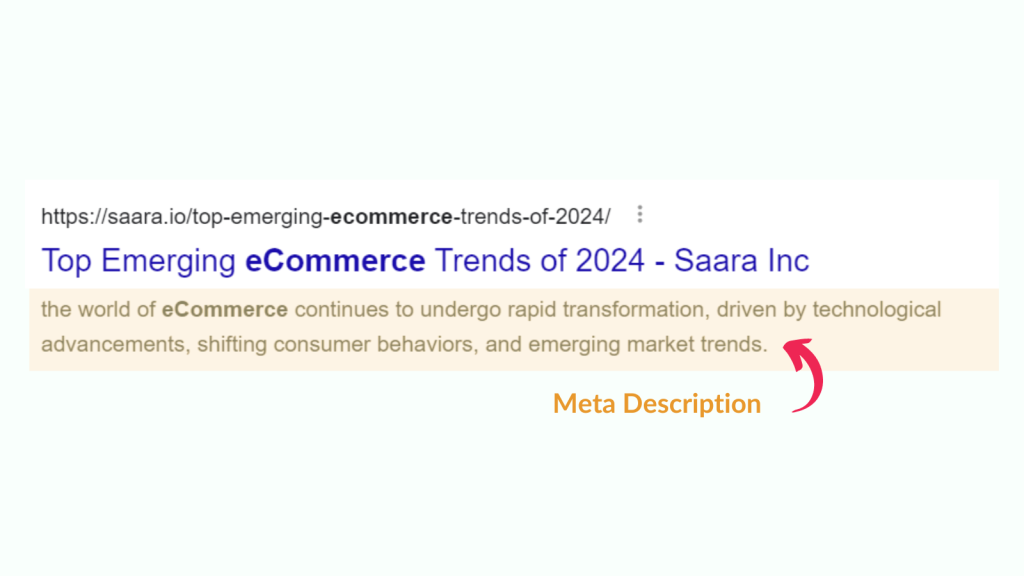

- Image Alt Tags: Optimizing image alt tags with relevant keywords to improve accessibility for visually impaired users and enhance the page’s relevance for search engines.
Structuring Categories for Seamless Browsing:
Hierarchical Structure:


- Logical Grouping: Grouping products into categories and subcategories based on their characteristics, functionalities, or intended use to facilitate intuitive navigation.
- Hierarchy: Creating a clear hierarchical structure with parent categories and child categories to organize products in a systematic manner.
- Navigation Menus: Designing user-friendly navigation menus that allow visitors to easily browse through different categories and subcategories without feeling overwhelmed or lost.
Enhancing User Experience:
- Filters and Sorting Options: Implementing filter and sorting options that allow users to refine their search results based on specific criteria such as price, brand, size, color, etc.
- Breadcrumbs: Displaying breadcrumbs navigation trails that show users the path they have taken to reach the current page and enable them to navigate back to previous categories or the homepage.
- Internal Linking: Strategically interlinking related products and categories within the website’s content to improve navigation and facilitate cross-selling or upselling opportunities.
Equip Yourself with Essential Knowledge and Tools:
Keyword Research Tools:
- Google Keyword Planner: Utilizing Google’s free keyword research tool to discover relevant keywords, analyze search volumes, and identify potential opportunities for targeting.
- SEMrush, Ubersuggest and Ahrefs: Leveraging premium keyword research tools to conduct in-depth keyword analysis, competitor research, and backlink analysis to inform SEO strategy and decision-making.
Analytics Platforms:
- Google Analytics: Installing Google Analytics to track website traffic, user behavior, conversion rates, and other key performance indicators (KPIs) to measure the effectiveness of SEO efforts and identify areas for improvement.
- Ecommerce Tracking: Setting up ecommerce tracking in Google Analytics to monitor sales, revenue, and transaction data to gain insights into customer behavior and purchasing patterns.
SEO Plugins and Software:
- Yoast SEO and All in One SEO Pack: Installing SEO plugins for WordPress websites to optimize on-page elements, generate XML sitemaps, and improve website performance for better search engine visibility.
- Screaming Frog and Moz Pro: Using SEO software tools like Screaming Frog and Moz Pro to conduct website audits, identify technical issues, and track keyword rankings to monitor SEO performance and make data-driven optimizations.
How to Secure Your eCommerce Site:
With cyber threats lurking around every virtual corner, safeguarding sensitive customer data and protecting your business reputation is non-negotiable. Here are some essential steps to fortify and secure your eCommerce site:
Implement SSL Encryption: Secure Socket Layer (SSL) encryption encrypts data transmitted between a user’s browser and your website server, making it unreadable to unauthorized parties. Installing an SSL certificate not only secures online transactions but also boosts customer trust by displaying the padlock icon and “https” in the URL bar.
Choose a Reliable Hosting Provider: Choose a reputable hosting provider that offers robust security features and regular software updates. Ensure that their servers are equipped with firewalls, intrusion detection systems, and malware scanning tools to safeguard against potential threats.
Employ Web Application Firewall (WAF): A Web Application Firewall monitors and filters HTTP traffic between your website and the Internet, identifying and blocking malicious requests. WAFs help prevent common threats such as SQL injection, cross-site scripting (XSS), and Distributed Denial of Service (DDoS) attacks.
Regular Security Audits and Penetration Testing: Conduct regular security audits and penetration testing to identify vulnerabilities and weaknesses in your eCommerce site’s infrastructure and codebase. Address any identified issues promptly to mitigate risks and strengthen your defenses.
Secure Payment Processing: Partner with trusted payment gateways and ensure that payment transactions are conducted over secure channels. Implement additional security measures such as tokenization and address verification systems (AVS) to protect customer payment data from fraud and unauthorized access.
In Conclusion:
Learning Search Engine Optimization (SEO) is of the utmost importance if you want to succeed in the global marketplace of e-commerce, where exposure is everything. As you embark on your SEO journey, remember that it’s not just about rankings—it’s about creating engaging user experiences and building trust with your audience.
Prioritizing SEO enables you to establish credibility, and authority, and ultimately, drive conversions and revenue.
So, let SEO work for you and let your e-commerce firm reach its full potential. With dedication and the right strategies in place, you can rise above the competition and carve out your place in the digital marketplace. Let SEO be your guiding force as you go through the ever-evolving landscape of e-commerce.
